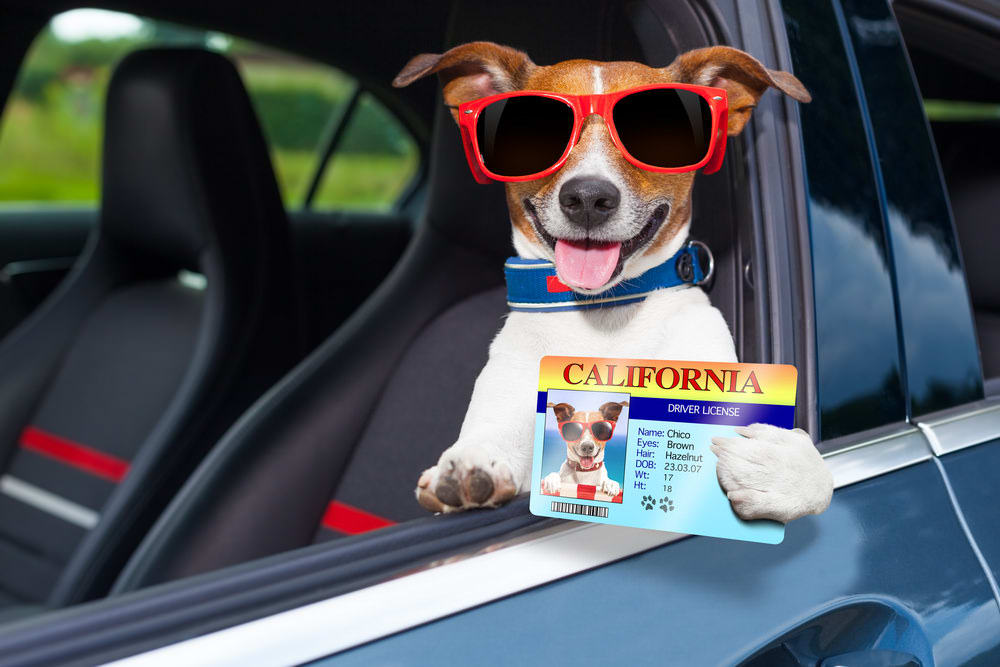

For some people, it's inconceivable to go on a trip without their beloved pet. Whether the destination is near or far, pets are like family members, and many people travel with their pets in tow. Pets rely on their owners for their daily needs, and road trips can quickly become stressful if your pet isn't comfortable or properly contained. Here are some tips to make traveling in the car with your furry (or scaly, or feathered) companions easier:
Use a crate or other secure container: Although it may feel like you are putting your pet in jail when you lock him or her up in a carrier or crate, it's a safety precaution you should take for every animal you transport in your vehicle. Make sure the container is large enough for your pet to stand up and move around in to stay comfortable. You may want to consider getting your animal used to the crate or carrier in short stints at home before a longer trip, so he or she associates the crate with an already comfortable environment.
Pack a bag of essentials: Just as you have essentials to take on the trip, there are things your pet requires as well. Make sure you have a collar and/or harness, leash, clean-up materials, and a copy of vaccinations. Include your pet’s favorite toy or blanket as well – it gives them something to play with while you drive.
Bring food and water: Many owners know how a change of food can wreak havoc on a pet’s digestive system, but different water sources can also cause an upset tummy or worse. Your pet may already be under stress from a long car ride, so you’ll want to minimize food changes as much as possible for its general well being.
Feed your pet a light meal before departure: While you don’t want your companion to be hungry on the drive, it’s difficult to predict how food will settle in a moving vehicle. Give your pet a little to eat beforehand, but refrain from providing any meals until you stop for an extended duration or reach your final destination. Of course, water should be provided throughout the trip.
Don’t leave your pet in a locked vehicle: When you need to stretch your legs or stop to eat, don’t forget your pet in the process. Aside from the emotional stress that it can cause, it’s possible for pets to overheat or freeze even if the temperature inside feels moderate and the vehicle is well ventilated. Unless it's absolutely not possible, bring your pet with you whenever you leave your vehicle.
Make sure your pet has identification: If you’ve opted for microchip identification on your pet, double check that your current contact information is on file before you leave. It's also a good idea to have a tag with your cell phone number on your pet’s collar in case the animal becomes separated from you. You may also consider carrying a current photograph of your pet with you to show others in the event of an escape. Such things are harder to retrieve when you’re away from home.
Take regular rest stops: Pets have bathroom needs just like humans, and it's more difficult for them to let you know when nature calls from inside their container. Stop every two to three hours to allow your pet to relieve itself and stretch.
Only use tranquilizers prescribed by your veterinarian: If you choose to sedate your pet for the trip, don’t give over-the-counter medication for humans or a sedative intended for another animal, even if you’re familiar with the medication’s effects. Such action presents a greater risk than just some indigestion or lethargy; non-prescribed medications can do grave harm.
Don’t let others upset your pet: If you have other human travel companions, especially children, instruct them to leave your pet alone in the car. “Travel time” does not equal “play time,” and agitating your pet will only make the trip harder on all of you, and set the wrong expectation that the car is a place for play for your pet.
Be prepared for arrival at your final destination: While it may sound like a no-brainer, sometimes the most obvious elements of a plan get overlooked. Check that you have booked pet-friendly accommodations for your travels, and make sure you’re aware of any extra fees or rules related to pets you must follow while on the premises.
If you follow these guidelines while traveling with your pet, the road trip should go enjoyably for all. These simple preparations will relieve much of the stress associated with a long car ride – for you and your companion. You'll both arrive at your destination feeling energized rather than worn out from a frenzied, furry drive.



